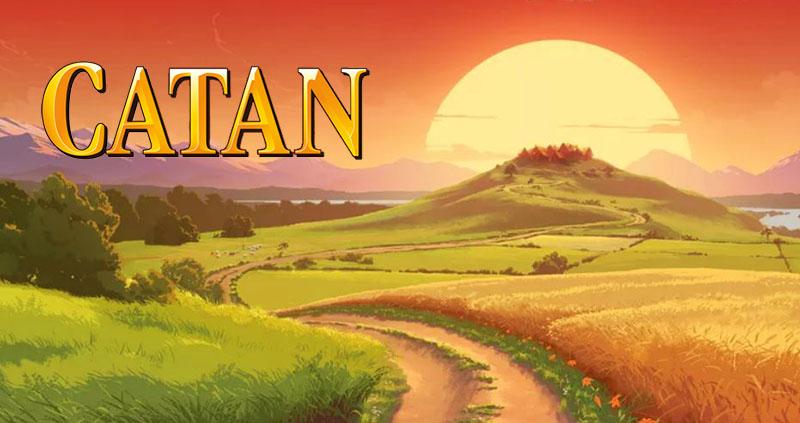Critical Play: Settlers of Catan
For this Critical Play, I decided to play Settlers of Catan with a few of my friends living in my residence hall – it’s a game that I grew up playing with my parents and brother. As a child, I never analyzed whether or not the game was balanced, so it was a pleasure to analyze a game that I’ve been playing for a while! I always thought that the game was slightly unbalanced, and leaned more on luck and chance rather than skill – the puzzling victories from my parents are a good example of how luck sometimes wins out. This game is developed by Klaus Teuber and the game was designed for children ages 10 and up. The objective of the game is to collect 10 victory points, which can be won through building of settlements (1 point), cities (2 points), getting longest road (2 points), getting largest army (2 points), and development cards (1 point). Players start out with two settlements and roads, where they can place according to the resource type – if their settlement is on a specific quadrant of tiles, they will get the resources whenever that number is rolled. At each turn, players roll 2 dice, and all players retrieve resource cards if they have a settlement on it – these resource cards such as Wheat, Brick, Wood, Sheep, and Ore are used to build settlements, cities, roads, and to buy development cards. It’s a player Vs. player game, where each member is trying their best to outwit the others!
Types of Fun
Challenge: This game relies on the challenge of player vs. player interactions and is aimed at you being able to outwit the others. There are limited resources and space on the board, so conflict is bound to happen between you and other players!
Fellowship: A large part of the game is geared towards resource trading, where you must negotiate resource trades and ensure that you are getting the better end of the deal.
Balance
Across the lifespan of a game, there are numerous mechanisms to balance out gameplay – namely, the fact that there are multiple paths to victory is an essential mechanism that ensures players have multiple options at any given time. This is an essential element to the “fun” of the game – players strategize at the start of the game according to the settlements and roads they received, and adapt this strategy as the game goes on. For example, players with lots of wood and brick may opt to get the longest road given they have a lot of resources conducive towards that strategy, and players with lots of sheep, wheat, and ore might opt for a development card strategy. At any given time, there are multiple paths to victory and it ensures that players are kept on their toes at all rounds!
I was struck by how Catan was able to balance the game, even though the game is inherently unbalanced from the very start of the game. The distribution of resources is bound to be unequal amongst the players during their initial selection process – however, the game is still able to provide many paths to victory for players that were unlucky in their initial settlements. The asymmetry of the game was effectively balanced by the richness and breadth of the game itself. Even if you didn’t get lucky and place your settlements on wood and brick, you still had the option of trying to get largest army or expanding into a separate part of the map.
This game is balanced by both transitive relationships – the material cards can be used to be combined in different ways, and they can be used to accomplish different ends. For example, even though sheep is necessary to build a settlement, it’s also a necessity to buy a development card. In that sense, the player is tasked with the decision-making prompt of choosing between either and ensuring that, at every round, they are making the optimal choice to get them one step closer to victory. There is also an inherent intransitive relationship of the materials as well – at any one point, select materials and resources are much more valuable than others and its scarcity is also of utmost importance. For example, wood and brick are very necessary in the beginning of the game to encourage expansion onto new tiles and ports. However, these two resources become much less important as the game goes on, as players require wheat and ore to build cities and buy development cards – this intransitive relationship is also essential for players to determine their strategy.
In terms of improvements to balance of the game, I believe that Catan should encourage players to trade more – I thought it was the most interesting aspect of the game and compounded the fun mechanism of fellowship. However, at times, a lot of players are de-incentivized to share their resources. In summary, I really loved playing this game and re-exploring the balance of my favorite childhood game!



